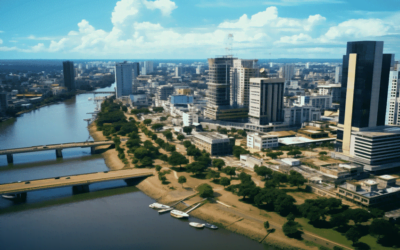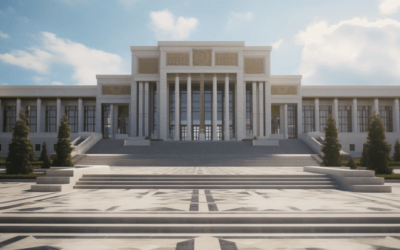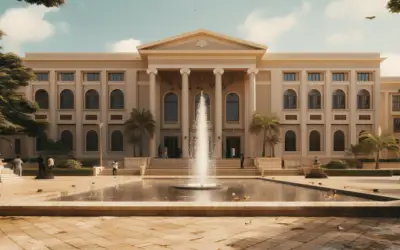Hey there, fellow drone enthusiasts and inquisitive minds! If you’ve ever found yourself curious about the drone laws in the stunning country of Montenegro, you’re not alone.
I know how it feels to be itching for that perfect flight, wanting to capture the breathtaking Montenegrin landscapes from above. The search for reliable information on Montenegro’s drone regulations can be quite a journey, and I’ve been down that road myself.
So, here’s the deal – I’ve delved into the depths of Montenegro’s drone laws, fueled by the same passion that brings you here.
I wanted to get all the facts straight, navigate the regulations with confidence, and ensure I was making the most of my drone adventures in this remarkable country.
I’ve spent hours digging into the official guidelines, consulting with experts, and sorting through the intricacies of Montenegro’s drone regulations.
Now, you’re in luck because I’m here to share my findings with you. If you’re seeking answers, guidance, and an in-depth understanding of Montenegro’s drone laws, you’re in the right place.
This article will be your go-to resource, addressing your search intent comprehensively. So, if you’re ready to embark on this journey and unlock the secrets of drone flying in Montenegro, read on, my friends, and let’s explore the world of Montenegro Drone Laws together.
- Montenegro Drone Laws for Hobbyists
- Montenegro Drone Laws for Commercial Operators
- Drone Regulations for Visitors to Montenegro
- Government Drone Operations in Montenegro
- General Montenegro Drone Laws
- Classification of Drones in Montenegro
- Montenegro Drone Classification Summary
- Drone Registration in Montenegro
- Additional Note for Foreign Operators
- Notes for Recreational and Commercial Drone Pilots
- Bringing Your Drone on Airplanes Guide
- Final Thoughts on Montenegro Drone Laws
- Frequently Asked Questions on Montenegro Drone Laws
Montenegro Drone Laws for Hobbyists

Alright, let’s kick things off with the lowdown on Montenegro’s drone laws for all you hobbyist drone pilots out there. Whether you’re a seasoned flyer or just starting to spread your wings in the world of drones, Montenegro has some rules to keep in mind as you take to the skies.
Rules for Hobbyist Drone Operators in Montenegro
Now, here’s the scoop for hobbyists in Montenegro. If you’re planning to enjoy the thrill of flying your drone for fun, you’re in for a treat. The good news is that Montenegro welcomes hobbyist drone pilots with open arms.
No need to jump through hoops or deal with heaps of bureaucratic red tape. As long as you’re pursuing the joy of flying, you’re on the right track. Montenegro is more than happy to accommodate your hobby.
Specific regulations, including registration, insurance, and flight restrictions
Alright, time to get into the nitty-gritty details. Hobbyist drone pilots, here’s what you need to know. First off, when it comes to registration, you’re in luck—Montenegro doesn’t require you to jump through the registration hoops like the commercial folks. You can focus on perfecting your drone skills without the extra paperwork.
But hold on, there’s a catch! While registration might not be on your to-do list, you still need to exercise caution. Montenegro’s drone laws emphasize safety, so you’re expected to fly responsibly and follow some flight restrictions.
Keep your drone within sight, stay clear of sensitive areas, and avoid flying over people or large crowds. It’s all about striking the right balance between having fun and ensuring safety for everyone in Montenegro’s beautiful landscapes.
Also Read: Drone Laws in Mongolia 2024
Montenegro Drone Laws for Commercial Operators

Now, let’s dive into the world of commercial drone operators in Montenegro. If you’re looking to turn your passion for drones into a profession, Montenegro’s drone laws have a different set of guidelines in store for you. Buckle up as we explore the details of commercial drone operations in this picturesque country.
Detailed regulations for commercial drone operators in Montenegro
Alright, all you commercial drone pilots, let’s get down to the specifics. Montenegro has a few more hoops to jump through for those of you who use drones for business purposes. The regulations here are designed to ensure safety and accountability. You’ll need to adhere to these rules to keep the skies friendly for all.
Montenegro expects commercial operators to obtain the necessary licenses and permits, so be prepared for a bit of paperwork. Additionally, you’ll have to follow specific flight restrictions and safety guidelines to ensure your operations don’t pose any risks to the public or the environment.
Licensing requirements, registration, and insurance obligations for commercial drone operations:
Now, about those licenses and permits, as I mentioned earlier If you’re planning to operate drones commercially in Montenegro, you’ll need to secure a commercial drone pilot license. This process includes demonstrating your knowledge and skills in drone operation.
Furthermore, registration is mandatory for your commercial drone, ensuring that it complies with the country’s regulations. Montenegro emphasizes safety, and that’s where insurance comes into play. It’s not just a “nice-to-have”; it’s a “must-have.”
You’re required to have insurance coverage to ensure that any unforeseen incidents are adequately handled, should they occur during your commercial drone operations.
Also Read: Drone Laws in Monaco 2024
Drone Regulations for Visitors to Montenegro

Are you planning a visit to the stunning landscapes of Montenegro and itching to capture the beauty from above with your drone? Well, this section is tailored just for you.
Let’s explore the regulations and recommendations for tourists and foreign visitors who want to take to the skies with their drones in this breathtaking country.
Guidelines for tourists and foreign visitors interested in flying drones in Montenegro
If you’re a tourist or a foreign visitor with a drone in your travel gear, Montenegro offers some freedom in the skies. You’re welcome to experience the thrill of flying your drone while you explore the magnificent landscapes.
However, remember that a few guidelines are in place to ensure everyone’s safety and enjoyment of this picturesque destination.
For starters, there’s no need to worry about a drone pilot license. Montenegro keeps things relatively simple for tourists. While you won’t require a license, you do need to register your drone and secure the necessary authorizations.
These steps ensure that your drone use aligns with the country’s regulations and safety standards. Keep in mind the importance of adhering to these guidelines, and you’ll have a memorable time capturing Montenegro’s natural wonders.
Registration and insurance recommendations for drone use in the country
As a visitor or tourist bringing your drone to Montenegro, it’s essential to be aware of the registration and insurance aspects. While registration is necessary for drones exceeding specific weight and distance criteria, it’s a straightforward process designed to keep track of drone activity in the country. This helps ensure safety and accountability for all.
Moreover, even though insurance isn’t mandatory for tourists, it’s highly recommended. Accidents can happen, and having insurance in place offers peace of mind, knowing that you’re prepared for any unexpected situations. It’s a safeguard that could prove invaluable during your drone adventures in Montenegro.
So, as you prepare for your journey to Montenegro, be sure to familiarize yourself with these guidelines, and remember that a bit of preparation goes a long way in making your drone experience unforgettable.
Also Read: Drone Laws in Moldova 2024
Government Drone Operations in Montenegro

Now, let’s shift our focus to government drone operations in picturesque Montenegro. If you’re a part of a government agency or department looking to take to the skies for official purposes, there’s a set of regulations you need to be aware of.
Let’s unravel the rules and requirements governing government drone operators in this captivating country.
Rules and requirements for government drone operators in Montenegro
Government drone operators, here’s the deal. When you’re representing an official entity, Montenegro has a few rules in place to ensure your drone operations align with safety and accountability. The rules encompass various aspects, from where you can fly to how you should handle your drone.
First off, as a government drone operator, you need to obtain the requisite licenses and permits. Montenegro wants to ensure that you’re equipped with the knowledge and skills necessary for safe and responsible drone operation.
Additionally, there are specific flight restrictions in place, emphasizing the safety of the public and the environment.
Licensing and registration obligations for government drone operations
Now, about those licenses and registration requirements. As a government drone operator, you’ll need to secure the necessary licenses and permits to conduct official drone operations. These processes are designed to establish your competence and commitment to safety.
Moreover, registration is a crucial part of the equation. It’s essential to keep track of government drone activities in the country and ensure transparency. By registering your drones, you contribute to the overall safety and accountability within Montenegro’s skies.
So, if you’re part of government drone operations, it’s all about striking the right balance between meeting regulatory requirements and ensuring the success of your official missions. Be sure to follow these guidelines and fulfill your obligations to navigate the Montenegrin skies with confidence and responsibility.
Also Read: Drone Laws in Micronesia 2024
General Montenegro Drone Laws

Let’s round up our journey through Montenegro’s drone laws by touching on the general rules that apply to all drone operators, regardless of whether you’re a hobbyist, a commercial operator, or even part of a government entity.
These are the fundamental guidelines that ensure the safe and responsible use of drones in Montenegro.
Additional general drone laws applicable to all operators in Montenegro
For anyone taking to the Montenegrin skies with a drone, there are some standard rules to follow. Montenegro emphasizes safety, and these laws are designed to create a harmonious atmosphere for all operators. Whether you’re flying for fun, business, or official purposes, these rules apply across the board.
Restrictions on altitude, privacy, flying over crowds, and sensitive areas
So, what exactly do these general laws entail? Well, they cover several crucial aspects. First, there are restrictions on altitude.
Drones should not be flown higher than 150 meters, ensuring that they remain safely within the designated airspace. Privacy is another critical element.
Operators must respect the privacy of individuals, and this includes refraining from capturing images or videos in a way that invades someone’s personal space.
Moreover, there’s a strict “no-fly” zone when it comes to flying over crowds. Drones should stay clear of large gatherings and events to avoid any potential hazards.
Lastly, sensitive areas, such as government facilities and military zones, are off-limits for drone flights. These regulations are designed to safeguard the security of these sites.
So, whether you’re soaring through the skies of Montenegro for fun or business, it’s essential to be aware of these general drone laws to ensure a safe and responsible flight.
These rules exist to guarantee that drone operators can explore this beautiful country while maintaining respect for its people and places.
Also Read: Drone Laws in Mexico 2024
Classification of Drones in Montenegro

Ever wondered how Montenegro organizes its airspace for drones? Well, it turns out, that Montenegro has a smart system in place to ensure safe and responsible drone operations.
Let’s explore the four classes of potential flying areas and how drones are categorized based on their weight. Understanding this system is key to navigating the Montenegrin skies like a pro.
classes for potential flying areas in Montenegro
First things first, let’s break down the four classes of potential flying areas in Montenegro. These classifications help differentiate between undeveloped, developed, uninhabited, inhabited, and urban zones.
Class I represents undeveloped areas where only pilots and necessary personnel are present. Class II includes developed but uninhabited areas without commercial structures or permanent human habitation.
Moving on, Class III involves inhabited areas with structures primarily for residential, commercial, or recreational purposes.
Think of houses, schools, and parks. Finally, Class IV encompasses urban zones, including downtown areas and settlements. Each class has its own unique set of requirements and limitations, ensuring that drone operations align with the nature of the area.
Private pilot limitations and the weight-based categorization of drones
If you’re a private pilot, these classifications matter. Private pilots can only operate drones classified as Class I or II.
Now, when it comes to the weight of the drones, Montenegro has a system in place. Drones weighing over 500 grams and capable of flight distances greater than 15 meters and heights greater than 10 meters must be registered.
So, if you’re planning to fly in Montenegro, it’s crucial to understand these classifications and weight-based categorizations to ensure that you’re operating in the right areas and following the country’s regulations. By doing so, you’ll be able to explore the wonders of Montenegro while respecting the unique characteristics of each flying zone.
Also Read: Drone Laws in Mauritius 2024
Montenegro Drone Classification Summary

As we near the end of our journey through Montenegro’s drone laws, let’s take a closer look at the Montenegro Drone Classification Summary.
This summary breaks down the various categories and their requirements based on flying areas and weight classes. Understanding this summary is essential for anyone planning to operate a drone in Montenegro.
Detailed requirements for each category (A, B, and D) based on flying areas and weight classes
Montenegro’s drone classification system is divided into categories A, B, and D. Each of these categories comes with its own set of requirements, tailored to the specific flying areas and weight classes. For Category A, you’ll need to complete and submit an aviation authority statement.
Moving on to Category B, additional requirements come into play. You’ll need to have an operations manual that outlines your maneuvers. This ensures that your drone operations in Montenegro are well documented and align with the regulations.
Now, Category D is a bit different. Helicopter flights in this category are permitted only with the approval of the Civil Aviation Authority (CAA). The detailed requirements for this category emphasize safety and responsibility in government drone operations.
Specific obligations, including aviation authority statements and operation manuals
In Montenegro, it’s all about keeping things transparent and safe. The aviation authority statements and operation manuals are your tools for achieving just that.
By submitting the necessary documents and maintaining comprehensive operation manuals, you ensure that your drone activities align with the country’s regulations.
So, whether you’re a private pilot, a commercial operator, or part of a government entity, understanding the Montenegro Drone Classification Summary is key to ensuring that your drone operations in this beautiful country are not only lawful but also safe and responsible.
It’s all about finding your place within the classifications and following the requirements that come with them.
Also Read: Drone Laws in Mauritania 2024
Drone Registration in Montenegro

One of the critical aspects of flying drones in Montenegro is understanding the drone registration process.
It’s a way to ensure that all drone activities are well documented and adhere to the country’s regulations. Let’s delve into the specifics of this process, including the weight and distance criteria, so you can take to the Montenegrin skies without any worries.
Drone registration process, including weight and distance criteria
So, what’s the deal with drone registration in Montenegro? It all boils down to the weight and distance criteria.
Drones weighing more than 500 grams and capable of flight distances greater than 15 meters and heights greater than 10 meters fall within the registration requirements. This ensures that drones with a certain level of capability are documented and traceable.
Submission details for the Declaration form and registration with the Civil Aviation Authority (CAA)
Now, let’s talk about the nitty-gritty of the registration process. To register your drone in Montenegro, you’ll need to fill out a declaration form per the Unmanned Aerial Systems (UAS) Ordinance. Once you’ve completed the form, it needs to be sent to the Civil Aviation Authority (CAA).
It’s important to follow the submission details closely to ensure a smooth registration process. This includes the mode of submission and ensuring that all required documents, such as proof of payment, drone specifications, and a statement attesting to knowledge of the regulations, are written in Montenegrin and notarized.
By going through this registration process, you contribute to the safety and accountability of drone operations in Montenegro. It’s a step towards responsible and transparent drone flying in this beautiful country.
Also Read: Drone Laws in Marshall Islands 2024
Additional Note for Foreign Operators

If you’re a drone enthusiast planning to bring your trusty companion to Montenegro, there are some essential considerations to keep in mind.
Being a foreign operator in a new land means navigating through different rules and procedures. Let’s explore some guidance for foreign operators and understand the permit requirements to ensure a smooth and enjoyable drone experience.
Guidance for foreign operators bringing drones into Montenegro
First and foremost, if you’re planning to fly your drone in Montenegro, even as a tourist, you need to be aware of the regulations that apply. As a foreign operator, it’s vital to acquaint yourself with the rules and guidelines outlined by Montenegro’s Civil Aviation Authority.
This will help ensure that your drone adventures in this stunning country remain enjoyable and trouble-free.
Explanation of the permit requirement to avoid drone seizure and the complex application process
One crucial aspect for foreign operators is the permit requirement. Montenegro insists on a permit for those bringing drones into the country. Failing to obtain this permit can result in your drone being seized upon entry.
To acquire the permit, you’ll need to navigate through a somewhat complex application process.
The application itself is a bit intricate, as it cannot be emailed. You’ll need to submit it in person or through an authorized representative, and the import fee must be paid on-site.
Furthermore, it’s essential to ensure that all required documents, including proof of payment, drone specifications, and a statement confirming your knowledge of the regulations, are written in Montenegrin and notarized.
Also Read: Drone Laws in Malta 2024
Notes for Recreational and Commercial Drone Pilots

Whether you’re a weekend drone enthusiast or a commercial operator, understanding the guidelines and best practices is key to a safe and enjoyable experience in Montenegro.
Let’s take a moment to summarize some essential advice for both recreational and commercial drone pilots, emphasizing rule compliance and staying up-to-date with the regulator’s latest updates.
Summary of guidelines and best practices for both recreational and commercial drone operators
For both recreational and commercial drone pilots, the core principles remain the same. Always prioritize safety and responsibility. Maintain unaided visual contact with your drone, avoid flying over people, and respect the specified flight distances.
Additionally, it’s crucial to have liability insurance, especially for commercial drone operations, to ensure you’re covered in case of any unforeseen events.
Emphasis on rule compliance and continuous updates from the regulator
Staying informed about the latest regulations and guidelines is vital. The Montenegro Civil Aviation Authority regularly updates its rules to enhance safety and compliance.
As drone operators, it’s our responsibility to stay informed about these changes and adapt our practices accordingly.
Compliance not only keeps us on the right side of the law but also contributes to the overall safety and reputation of drone flying in Montenegro.
So, whether you’re flying for fun or for business, remember that a responsible and well-informed drone operator is a successful one.
By following the rules and staying updated with the regulator’s latest recommendations, you can make the most of your drone adventures in Montenegro while respecting the beautiful landscapes and the people who call this place home.
Also Read: Drone Laws in Mali 2024
Bringing Your Drone on Airplanes Guide

If you’re an avid traveler and drone enthusiast, you might be wondering how to safely transport your drone when taking to the skies, both with your drone and in an airplane.
Let’s explore a comprehensive guide on how to bring your drone on airplanes while ensuring a hassle-free and secure journey. Plus, I’ve got some recommendations for carrying your drone in your carry-on luggage and handling those tricky lithium-ion batteries.
Comprehensive guide on transporting drones when traveling by air
When it comes to bringing your drone on airplanes, planning is key. Before your trip, make sure to check the airline’s specific rules and regulations regarding the transportation of drones.
Most airlines allow drones to be brought on board as part of your carry-on luggage. However, it’s essential to have a sturdy and protective case for your drone to prevent any damage during transit.
Additionally, ensure that your drone’s batteries are well-secured to avoid any incidents. By following these guidelines, you can enjoy your drone adventures both at your destination and during your travels.
Recommendations for carrying drones in carry-on luggage and handling lithium-ion batteries
Carrying your drone in your carry-on luggage is not only a convenient option but also the safest one.
According to the Montreal Convention, airlines are liable for losses up to a certain amount, which may not cover the full value of your drone. To ensure its safety, always keep your drone close to your carry-on.
When it comes to lithium-ion batteries, airlines have strict rules due to safety concerns. Lithium-ion batteries are considered “dangerous goods” by airlines, and improper handling can lead to severe consequences.
Always place these batteries in a Medium-Size Lipo Battery Bag and bring them onto the plane with you in your carry-on bag.
By following these recommendations, you can have peace of mind during your travels, knowing that your beloved drone is both secure and compliant with airline regulations. So, whether you’re flying locally or internationally, your drone can be by your side to capture those breathtaking moments.
Also Read: Drone Laws in Maldives 2024
Final Thoughts on Montenegro Drone Laws

As we wrap up this journey through Montenegro’s drone laws and regulations, let’s take a moment to recap the key points we’ve covered.
Understanding the rules and responsibilities of drone operators is crucial for a safe and enjoyable experience. Whether you’re a hobbyist, a commercial pilot, or a visitor, compliance is the key to responsible drone operation.
In Montenegro, flying a drone is legal, but it comes with its own set of rules and responsibilities. For each drone flight, approval from the Civil Aviation Authority (CAA) is required, and this applies to both the flight itself and the pilot.
Drone operators must be at least 16 years old, maintain liability insurance, and adhere to specific flight restrictions, such as daylight operations, distance from people and structures, and altitude limits.
We’ve also explored the classification of flying areas and weight-based categorization of drones, offering a comprehensive understanding of the rules that apply to different scenarios.
Compliance with drone laws is not just about following rules; it’s about ensuring the safety of everyone involved. Whether you’re capturing breathtaking aerial footage, conducting commercial operations, or exploring Montenegro’s stunning landscapes as a tourist, responsible drone operation contributes to the overall positive image of drone flying in this beautiful country.
So, as you embark on your drone adventures in Montenegro, remember that knowledge, responsibility, and a commitment to compliance are your best companions.
By adhering to the regulations and respecting the local environment, you can enjoy the beauty of Montenegro from the skies while maintaining the safety and privacy of those on the ground.
Frequently Asked Questions on Montenegro Drone Laws
1. Can I fly a drone in Montenegro as a tourist without a license?
Answer: Yes, foreign visitor drone flights are allowed in Montenegro without the need for a drone pilot license. However, drone registration or authorization is required, and it’s recommended to have drone insurance for your operations.
2. What are the rules for recreational drone pilots in Montenegro?
Recreational drone pilots in Montenegro can fly their drones, but they need to follow specific rules. These include obtaining approval from the Civil Aviation Authority (CAA) for each flight, maintaining liability insurance, flying only during daylight hours, and keeping a minimum distance of 30 meters from people, structures, and other objects. It’s essential to respect privacy and follow altitude limits.
3. Do I need to register my drone in Montenegro?
Drone registration is required in Montenegro for drones weighing more than 500 grams and capable of flying distances greater than 15 meters and heights greater than 10 meters. The registration process involves submitting the declaration form to the CAA.
4. What are the regulations for commercial drone operators in Montenegro?
Commercial drone operators in Montenegro are allowed to fly, but they must have a Montenegro drone pilot license, register their drones, and maintain drone insurance. Compliance with specific rules, such as flight approvals, liability insurance, and safe flight operations, is essential for commercial drone operations.
5. Can I bring my drone on an airplane when traveling to Montenegro?
Yes, you can bring your drone on an airplane when traveling to Montenegro. It’s recommended to place your drone in your carry-on luggage to ensure its safety. Additionally, lithium-ion batteries used in drones should be well-secured and transported in a Medium-Size Lipo Battery Bag in your carry-on bag to comply with airline regulations.













